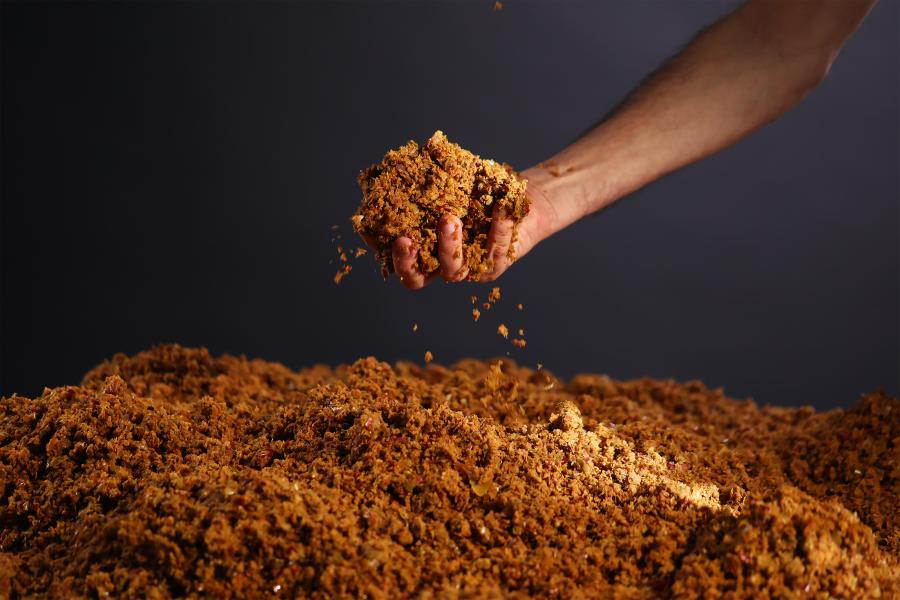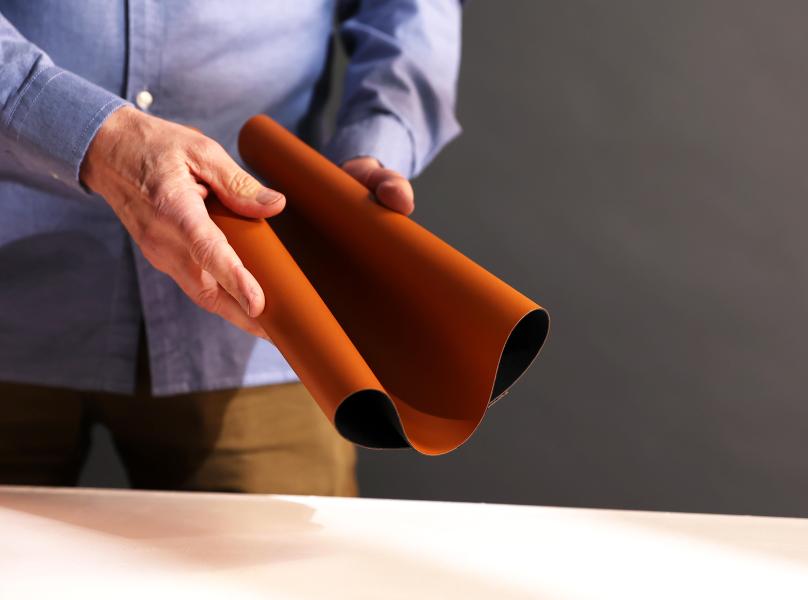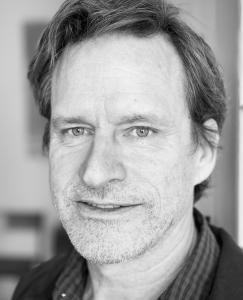Danish company’s sustainable apple leather saves animals and reduces chemical waste in waterways
Mikael Eydt likes to say he fell in love twice in Copenhagen.
Growing up in a small town in Germany, he already had a lifetime employment plan after leaving university — he would run the hotel that has been in his family for six generations. But he decided to have some fun before then, taking some time to work as a bartender in the Danish capital.
At the same time, he hadn’t lost his sense of curiosity about the subject he studied at university — business and sustainability. “How can you do good while at the same building a strong business?” he says. “Because the business is only sustainable if you also grow, right? That means generate profits.”
Shortly after arriving in Copenhagen in 2018, he started looking into young Danish companies that were taking this approach. That’s where he met Hannah Michaud, who was trying to get a business off the ground turning apple waste from cider production into something useful. They became friends, then business partners and formed what eventually became Beyond Leather Materials. About the same time, he met his girlfriend and decided to stay in Denmark.
Two months after he moved to Copenhagen, he called his parents and said, “Look, I'll probably not come back. I am sorry, but you have to find someone else.”
In a bio-mimicry course at the Copenhagen School of Design and Technology (KEA), Hannah had studied how to find a way to reuse apple pulp. “The first try was to turn it into cardboard,” Mikael says. “But we realised there really wasn’t a market for that.” Then they started looking into the market for leather substitutes and thought that if they could create a sustainable facsimile, the market would be there.
“We were putting a bet that the leather market would be going the way of the meat market,” Michael says, adding that people are increasingly making choices that respect the environment. “You can see that we are moving away from animal-derived products, and there is a booming market for next-gen materials.”
This goes beyond sustainability. It’s also about creating a material that saves animals and reduces the level of chemical waste dumped into water.
“There is more and more governmental information about how polluting this industry actually is,” Mikael says. “The amount of water and chemicals needed is immense. We thought. ‘Why not try to solve two problems — the waste stream from one side and the leather industry on the other.’”
Working with engineers at KEA they created a leather-like material that they call “Leap,” shorthand for “leftover apples.” As of now it’s composed of about 80% bio-based ingredients, with more than 30% apple waste. The goal is to have an entirely bio-based product. The production uses 99% less water and 85% less CO2 than traditional leather making.

Leap is based on apple waste
In 2020, they received a 1.1 million euro investment to increase production and expand the company. Beyond Leather Materials was a finalist in the 2021 Social Innovation Tournament, sponsored by the European Investment Bank Institute to help entrepreneurs whose products are helping society and the environment.
Mikael and Hannah decided to operate business-to-business — they are building a manufacturing company that will produce Leap and sell it to fashion companies and eventually other industries that use leather, like carmakers and furniture makers.
Mikael compares their approach to that of a company like Gore-Tex, developing a reputation for a quality product while selling it to many manufacturers of clothing. This way, “we can pick the customers that we want to go to because they also have to live up to our standards,” Mikael says. “We have a high-quality product, made with a transparent model, and it’s sustainable, which makes our customers’ imprint more sustainable. too.”
Waste can be beautiful
The company, with a team of eight, is in the “lab-to-pilot” stage, producing about 100 square meters of its material per month.
Beyond Leather Material is moving into a 1,000 square meter production facility in March, Mikael says, where it will be able to make many thousands of square meters each year. “We expect you’ll be able to buy products made from Leap by the end of this year,” he says.

The company has had interest from apple producers all over the world, because getting rid of pomace — the seeds, stems, skin, and pulp leftover from making cider and juice — is costly. Much of it ends up in landfills.
The company would like to have Leap factories wherever apples are grown, helping producers solve that problem. “That’s the beauty of it, right?” Mikael says. “We have over 3 million tonnes of waste generated every year, and we only need five kilos to make a square meter of Leap.”
Mikael’s dream is to make Leap a trusted product and part of the larger movement toward circular and sustainable economies. “We like to show people that waste can actually be beautiful and to create a shift towards thinking like that,” he says. “We want to show that upcycling is not just a nice idea, it’s also a very good business model.”
